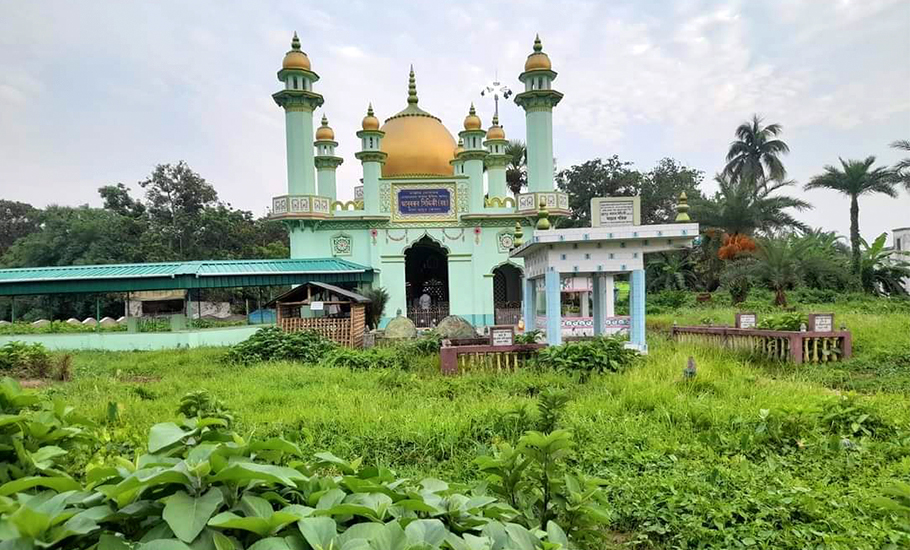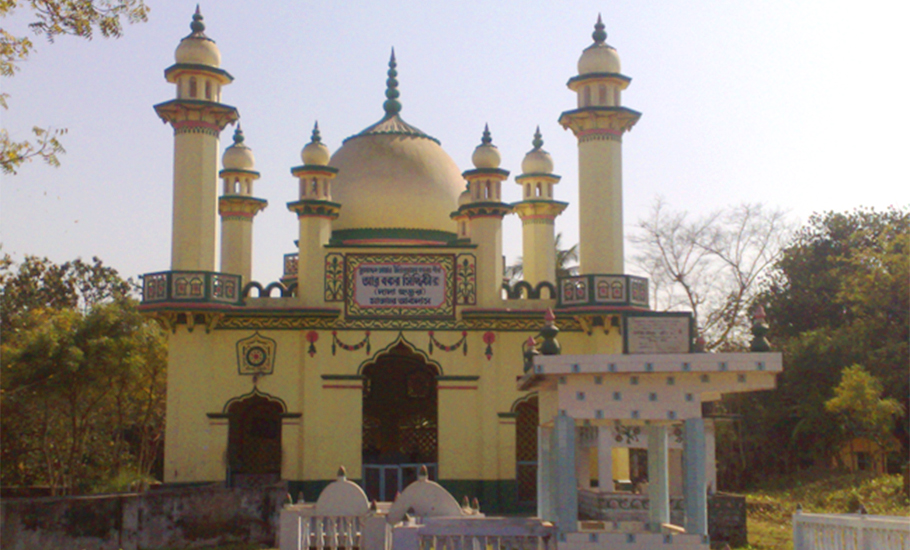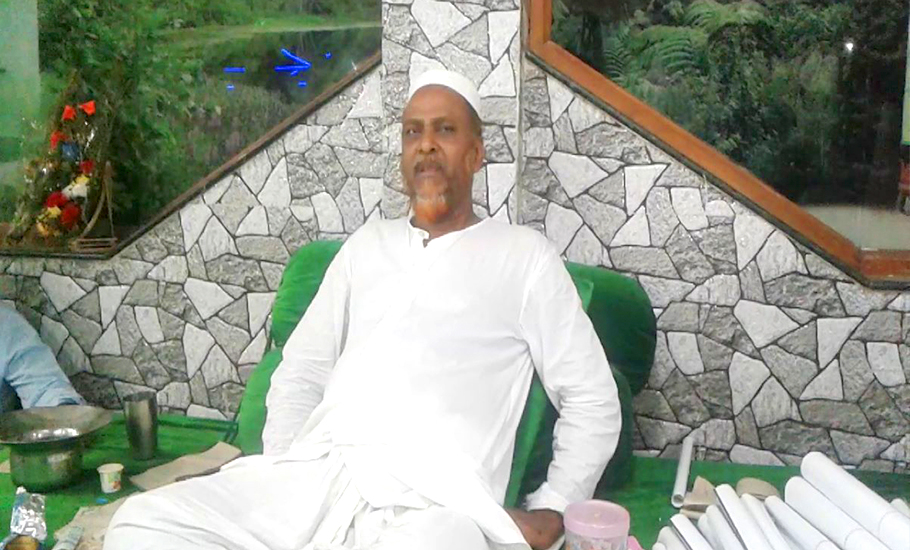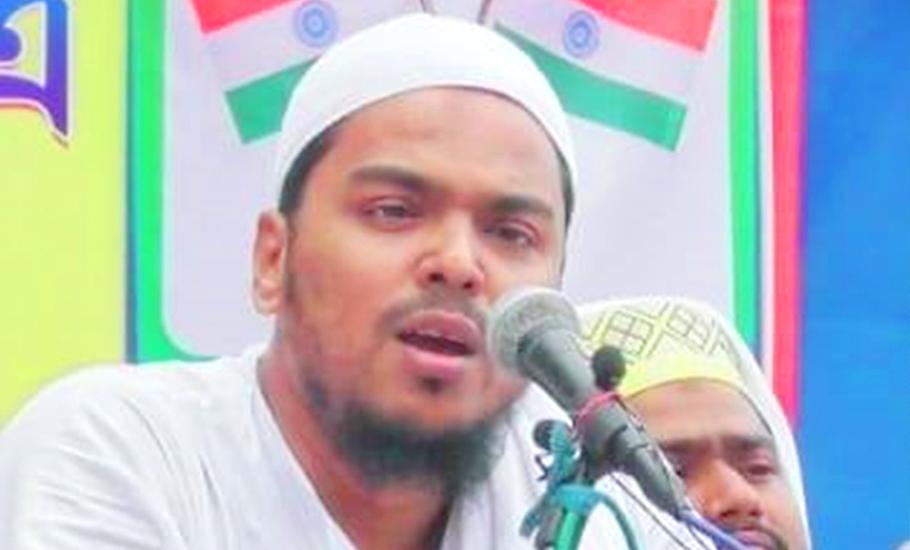
- Home
- News
- Analysis
- States
- Perspective
- Videos
- Education
- Entertainment
- Elections
- World Cup 2023
- Features
- Health
- Business
- Series
- Economy Series
- Earth Day
- Kashmir’s Frozen Turbulence
- India@75
- The legend of Ramjanmabhoomi
- Liberalisation@30
- How to tame a dragon
- Celebrating biodiversity
- Farm Matters
- 50 days of solitude
- Bringing Migrants Home
- Budget 2020
- Jharkhand Votes
- The Federal Investigates
- The Federal Impact
- Vanishing Sand
- Gandhi @ 150
- Andhra Today
- Field report
- Operation Gulmarg
- Pandemic @1 Mn in India
- The Federal Year-End
- The Zero Year
- Premium
- Science
- Brand studio
- Home
- NewsNews
- Analysis
- StatesStates
- PerspectivePerspective
- VideosVideos
- Entertainment
- ElectionsElections
- Sports
- Loading...
Sports - Features
- BusinessBusiness
- Premium
- Loading...
Premium

Why all roads in Bengal could turn to Furfura Sharif in days to come

Come Friday and thousands of pilgrims crammed in hundreds of cars descend in Furfura, a village in West Bengal’s Hooghly district, some 50 kilometres from Kolkata, to visit the Sufi shrine named Mazaar Sharif, transforming it into a pilgrimage centre brimming with seekers. People turn to Furfura seeking all sorts of things and for many a reason ranging from not having a child, to the child...
Come Friday and thousands of pilgrims crammed in hundreds of cars descend in Furfura, a village in West Bengal’s Hooghly district, some 50 kilometres from Kolkata, to visit the Sufi shrine named Mazaar Sharif, transforming it into a pilgrimage centre brimming with seekers. People turn to Furfura seeking all sorts of things and for many a reason ranging from not having a child, to the child not being in good health. Not having enough money to piling debt. Having no lovers, to spouses locked in extramarital relations. Not passing exams, to not having jobs.
Mamata Banerjee, however, turned to Furfura after her party Trinamool Congress (TMC) suffered a shock defeat in Sagardighi, a Muslim majority constituency, at the hands of Congress’ Bayron Biswas, on March 2. Her eyes, however, were not so much on the mazaar as were effort to reach out to the devotees of the shrine. Even though Banerjee did not visit the shrine or the town, her government scurried to give a development push to Furfura Sharif.
Such is the sway the Muslim pilgrimage centre in Hooghly holds on West Bengal politics.
But from its look, neither the dusty mofussil town of Furfura nor its famous religious centre appear anything extraordinary, belying the political importance of the place. Furfura, in fact, has all the trappings of any other ordinary semi-urban hardscrabble Indian settlement despite the religious pull of the medieval shrine in the region.
The shrine itself, if anything, stands out for its simplicity that mismatches its reputation. Most Muslims in West Bengal and its neighbouring places consider it as the second-most prominent mazar in the country after Ajmer Sharif Dargah in Rajasthan.
Despite that devotees throng the narrow roads that lead to Furfura to offer their weekly prayers at the 14th century mosque. The mosque built in 1375 shot to prominence only in the 19th century under Mohammad Abu Bakr Siddique, a Bengali Islamic scholar, and a revered peer, who was instrumental in establishing the Silsila-e-Furfura Sharif that is the order of Furfura-Sharif. He came to be respected for setting up hundreds of mosques and madrasas, which later became centres of education.

His tomb, the Mazaar Sharif, is venerated as one of West Bengal’s most prominent Sufi centres. Interestingly, the spread of Islam in Bengal can largely be attributed to Sufism, which had turned into almost a folk religion and symbol of interfaith harmony. Sufi saints were revered as folk deities.
Abu Bakr Siddique, a Bengali Islamic scholar and a revered peer, also had a cult-like influence on the people because of the work he did setting up religious and educational centres. He was instrumental in establishing the Silsila-e-Furfura Sharif that is the order of Furfura Sharif.
Before offering namaz at the mosque, the devotees pay a visit to the mazar of Abu Bakr Siddique and his five sons, popularly known as the Panch Huzur Qebla.
The Sufi saint is believed to be the direct descendant of the first Khalif of Islam, Syedena Hazrat Abu Bakr Siddique. One of his ancestors, Mansur Baghdadi, came from Baghdad to settle in a village, now known as Mollapara in Hooghly district, in the erstwhile Sultanate of Bengal in 1340.
Abu Bakr Siddique was born in Furfura Sharif in 1846. Apart from being a religious preacher, he was a freedom fighter and social worker. Apart from madrasas, he also set up orphanages, health centres and other charitable institutes in the area.
After his death in 1939 at the ripe age of 93, his tomb, popularly known as mazaar of Dada Huzur, became a pilgrimage centre for both Hindus and Muslims. The site draws millions of people from across the country and Bangladesh during the annual Urs festival held in early March.
More than its religious significance, the place is now mostly in news for being the hotbed of Muslim politics in the state.
The shrine holds significant sway over its followers that include even Adivasis and Scheduled Castes. The followers of the shrine can reportedly influence results in around 100 assembly seats in a House of 294 members.
Majority of the state’s nearly 30 per cent Muslim population either follows Silsila-e-Furfura Sharif or Jamiat Ulema-e-Hind or Tablighi Jamaat. Supporters of Furfura Sharif by far outnumber others.
This has turned the village into an important political pilgrimage centre as well. Political leaders from Left Front, to Hindu right BJP, to Trinamool Congress, and Congress, all at some point or other have beelined at the shrine.
What makes the setting a perfect political potboiler is that the Siddique family too is no stranger to politics as ‘Dada Huzur’ was a freedom fighter. The family, however, mostly remained aloof from the state’s electoral politics until the TMC started wooing it to dislodge the Left Front government in the run up to the 2011 assembly elections.
“Furfura Sharif has for long been an important pilgrimage for Muslims in Bengal. But during the Left Front regime and even prior to that, the shrine maintained distance from politics. But that changed once the TMC emerged as a serious challenger to the CPI (M)-led ruling dispensation,” said Md Saddudin, a Kolkata-based senior journalist.
Upset with the Left Front’s mishandling of the Sachar Committee Report that had highlighted the abysmal state of Muslims in the state and the anti-land acquisition movement in Muslim-dominated Singur and Nandigram, Furfura Sharif backed the TMC in the 2011 assembly elections.
After its historic victory, the first TMC government returned the favour announcing the formation of Furfura Sharif Development Authority (FSDA) headed by the party’s prominent minority face Firhad Hakim. Banerjee’s government allotted Rs 10 crore for the development authority’s functioning.
The courtship progressed smoothly, despite the newly formed development authority’s failure in bringing about much progress in the area. The storm that hit this smooth sailing ship, however, was cooking in the Siddiqui family. Everything changed when the family dispute took a political turn.
There are over a dozen spiritual leaders from the Siddiqui family who are engaged in disputes over properties and personal ambitions. The feud has divided the loyalties of shrine followers between Toha Siddique and his nephew Abbas Siddique.

In the last assembly elections held in 2021, the senior Siddique, Toha, backed the TMC while his nephew floated his own political party, the Indian Secular Front (ISF). Contesting elections in alliance with the Left Front and the Congress, ISF managed to win just one seat — Abbas’s brother Naushad Siddiqui was elected from Bhangar assembly constituency.
The TMC’s third straight term in power exposed its underbelly — typified by corruption, violent clashes among various factions of the party, brutal reprisal on political opponents and cut-money culture. That the minorities incidentally bore the maximum brunt of the debility led to a restlessness in the community over its support to the TMC.
Eight people from the community were burnt alive after an influential panchayat leader of the TMC, Bhadu Sheikh, was bombed to death at Bogtui village in Birbhum district last year. The incident came close on the heels of the brutal murder of Anish Khan, a young student leader and a vocal critic of the TMC government.
Both the incidents enraged the minorities.
Then came the arrest of Naushad Siddiqui, along with scores of his supporters, in January this year over their alleged involvement in clashes with police in Kolkata.
“The arrest and alleged custodial ill-treatment of Siddiqui and his co-accused, including a woman Asma Bibi, were seen as manifestation of vindictive politics, further alienating minorities from the TMC,” Saduddin said.
The defeat of the TMC candidate in the by-election to the Sagardighi constituency indicated the churn in the state’s minority politics.
Reading the writings on the wall, the TMC started its damage control exercise from Furfura Sharif, the shrine that the party fears can inflict maximum damage to its minority vote base.
After appointing Tapan Dasgupta as the new chief of the development authority of the shrine, the government decided to construct a new office building of the authority at Furfura. Currently, the authority functions from Srirampore.

Soon after taking charge, Dasgupta met clerics of the shrine to discuss development issues. He, however, said the renewed focus of the government on the shrine has nothing to do with the outcome of the bypoll.
“This has nothing to do with the bypoll results. The decision to construct the office building was taken long back,” he said.
The timing of the announcement, however, was more than a mere coincidence. It was a clear indication that Furfura’s political clout will be bitterly contested in the days to come.
That could mean more politicians making offerings at the mazar and reaching out to the Siddiqui family for support.

